Aswan - City at the First Cataract of the Nile and the Edge of Nubia
![]()
In our cozy cabin aboard the Sleeper Train from Cairo to Aswan, we slept comfortably until the first rays of sunlight entered. Uncertain about the arrival time in Aswan, we dressed quickly and asked for tea. The steward who brought it told us arrival was delayed. No worries, we relaxed, sipping our tea, and watched the landscape pass by.
At times the landscape was flat green irrigated fields edged in palms, with the deep blue waters of the Nile just beyond.
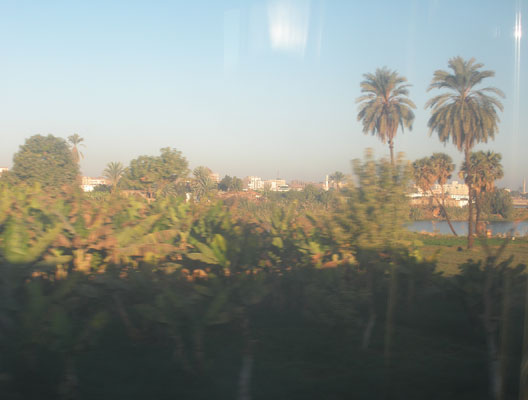
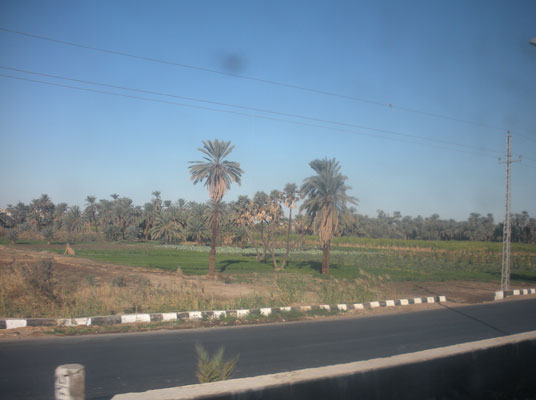
Later the green fields were narrow and our view was across the Nile to great hills or dunes of sand with occasional outcroppings of barren rock. The smoky air and grimy buildings of Cairo were far behind us now. The late arrival enabled us to linger over breakfast with more tea - a nice luxury.
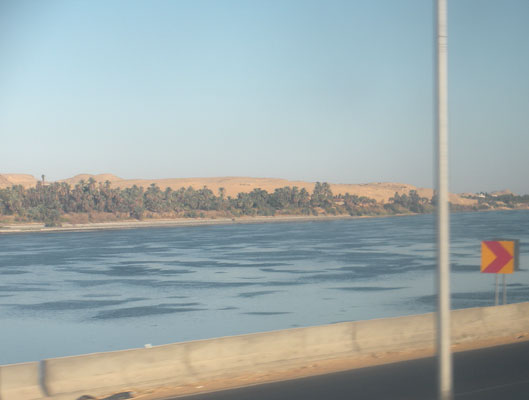
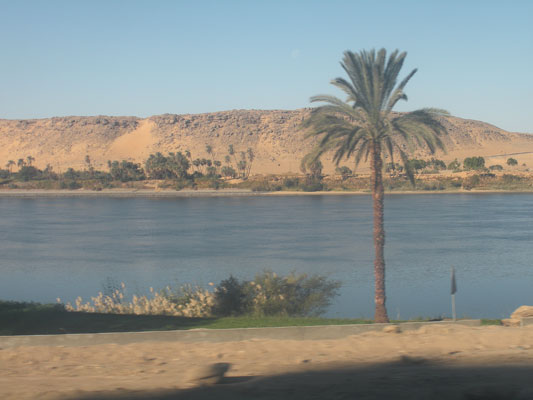
Arriving at the station in Aswan, we gathered our wheely bags and backpacks, and departed the train to make our way through the station, fending off the usual offers of hotels and taxi rides. We walked toward the river, and then along the Corniche searching for the side street to the Keylany Hotel where we had made reservations.
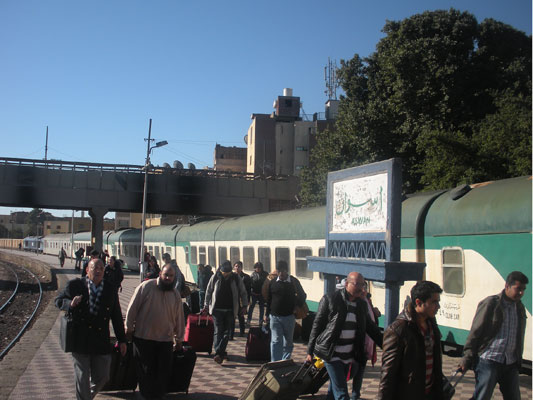
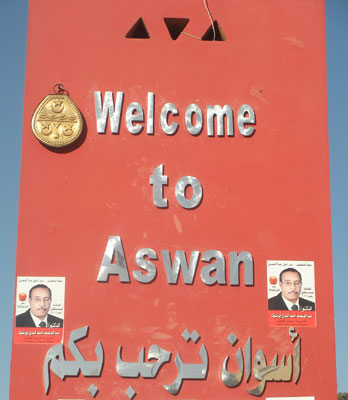
A tall dark skinned man in a galabiyya and turban asked if he could help. We explained we were searching for the hotel and he pointed us in the right direction and came along to help. He introduced himself as Mohamed Ali, a felucca captain and, not surprisingly, offered us a ride in his boat. He gave us his mobile number and urged us to call him when we were ready. We thanked him and said goodbye, quite sure we would see him again.
We checked into a cheerful, comfy room and relaxed. Before long the Meuzzin's voice rang out over loud speakers, calling the faithful to pray. After the call, the speakers continued to broadcast. Why, we wondered, until we realized it was Friday, the Muslim holy day, and we were hearing the entire sermon! Somehow it sounded interesting, if only we understood Arabic.
For the next week, less two days out for the journey to Abu Simbel, we investigated this small city of 275,000 folks. Throughout history, it has been a busy market town and remains so today due to its important position in Upper Egypt, 880 kilometers from Cairo, but just below the First Cataract of the Nile, the furthest point where ships could travel.
But today, tourism has overtaken trade in economic importance. As we began to explore, it quickly became clear that the economic downturn and political unrest had made a severe impact. This was our first introduction to the real impact of the low tourist numbers - hotels had few occupants; there were dozens of men offering felucca (sail boat) rides, books and post cards, and taxi and carriage rides, all for bargain prices to the few foreign visitors; and the restaurants were mostly empty, with us often the only diners.
We did discover some good food, however, such as vegetable tagen, veggies in spicy tomato sauce baked in a casserole, served with rice and pita bread - yum! Also, in spite of the fact that Muslims do not drink alcohol, Salah-al-Din, a riverfront cafe, served Stella, the local beer. We also discovered Birell, the non-alcoholic malt beverage preferred by observant Muslims. We ate there often enjoying the unbeatable combination of good food and drink and panoramic views over the river!
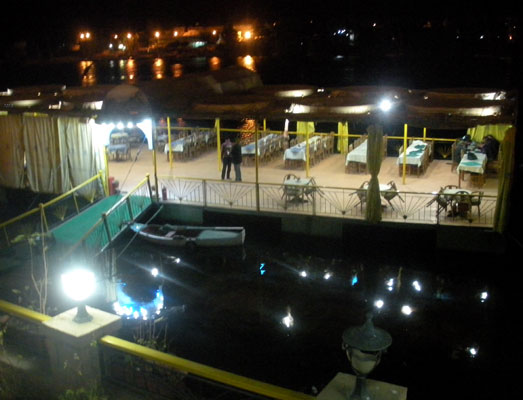
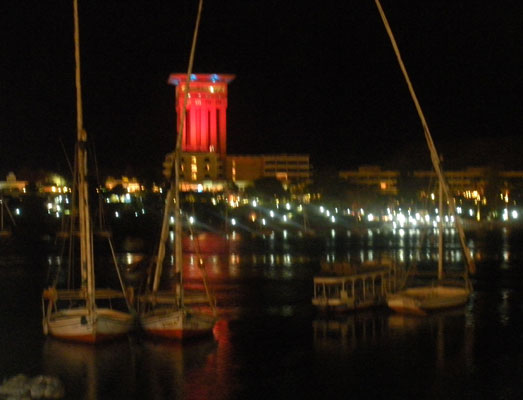
In walks around town, we admired the Mosque on the hill, and explored local streets with shops selling fruits and veggies and other goods of all sorts.
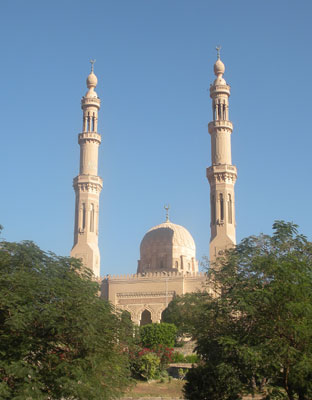
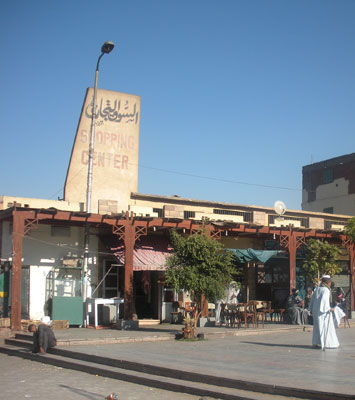
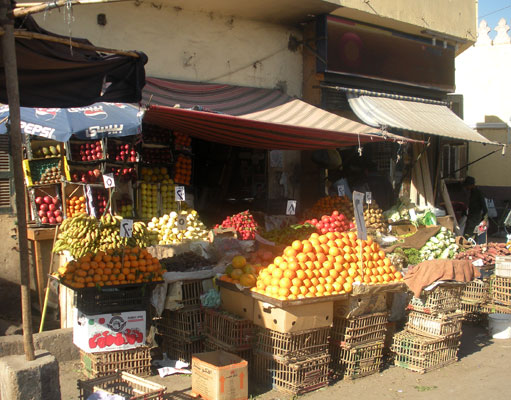
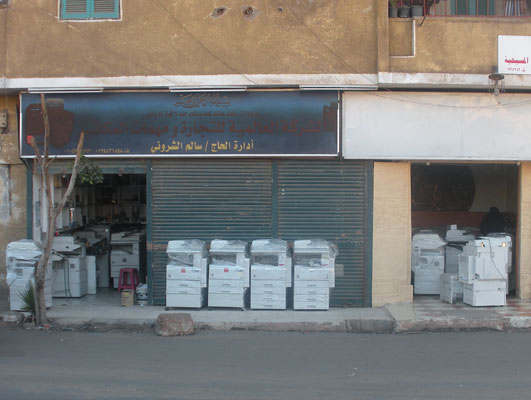

We also strolled the Souk where some shops catered to tourist tastes while others sold spices, clothes, and falafel, mostly to the local folks.
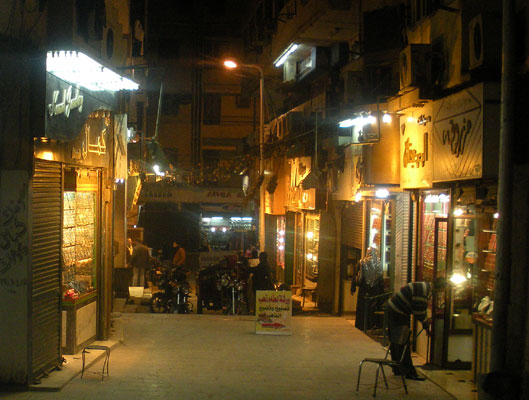
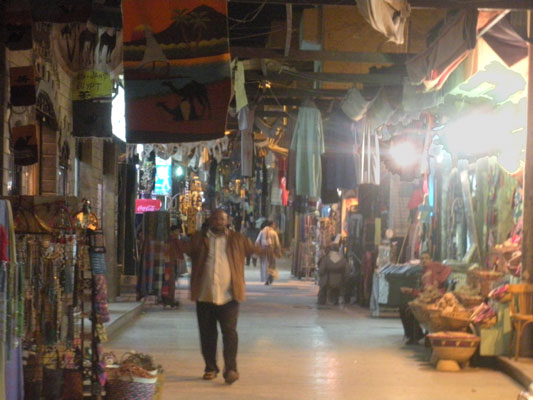
From our hotel we watched the construction of a multistory building all done the Egyptian way, with minimal equipment and plenty of labor.
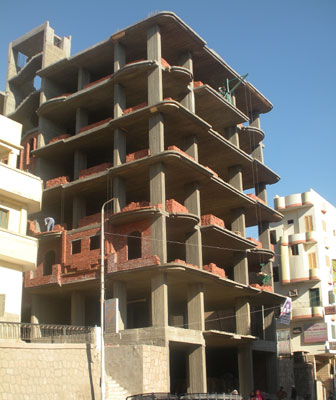
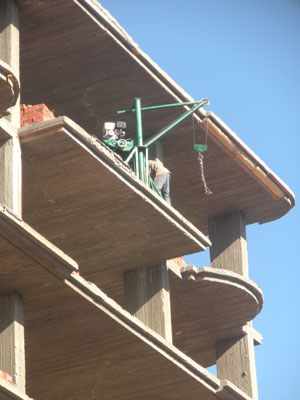
The Nubia Museum was a highlight. Housed in an architecturally significant building, the museum holds treasures of sculpture and art, rich information about the Nubians, whose culture dates back to 6000 BC when these people settled in the Upper Nile Valley above the First Cataract to farm the rich flood plain. Their interactions with the Egyptians were complex and varied between being conquered and conquerors of these lands, in what is now southern Egypt and Northern Sudan, that were rich in resources including gold, copper and granite. Today, many of the Nubians of Egypt have been displaced from their traditional lands by the rising waters of Lake Nasser after the construction of the Aswan High Dam (most of the area in the map shown below).
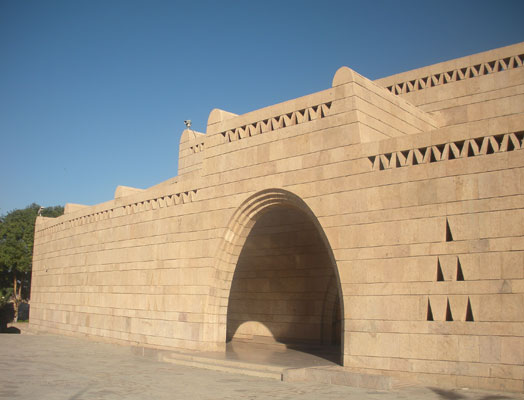
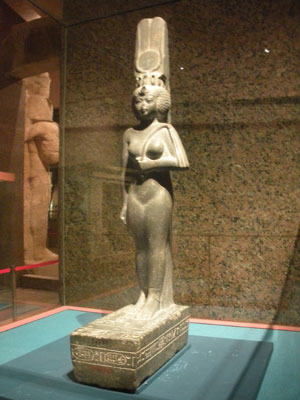
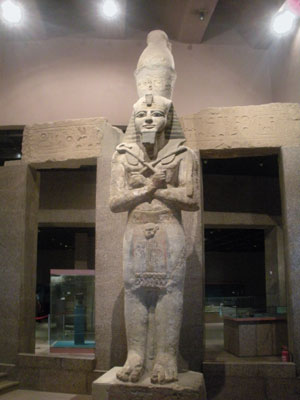
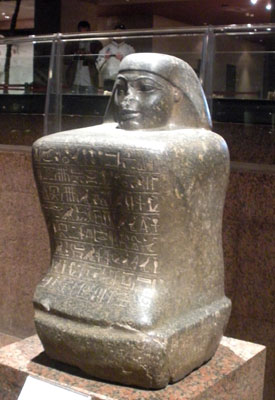
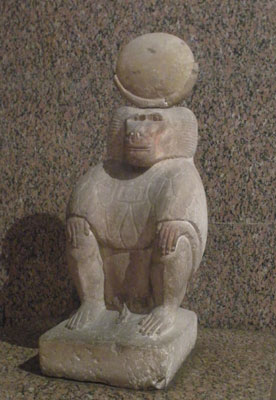
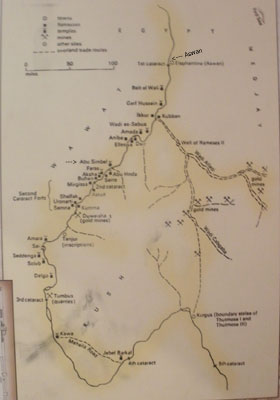
A small population of Nubians have found a home on Elephantine Island in the middle of the Nile at Aswan. We rode the public ferry there to walk through their community, admiring the fertile fields and brightly painted houses.
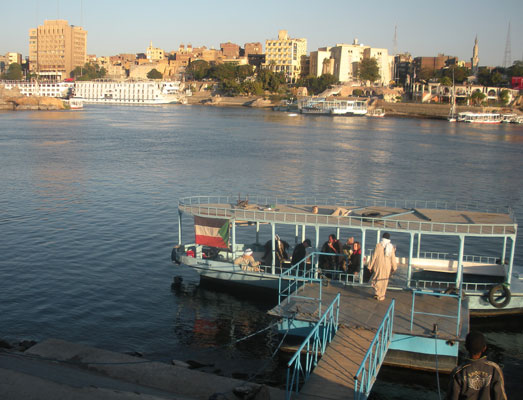
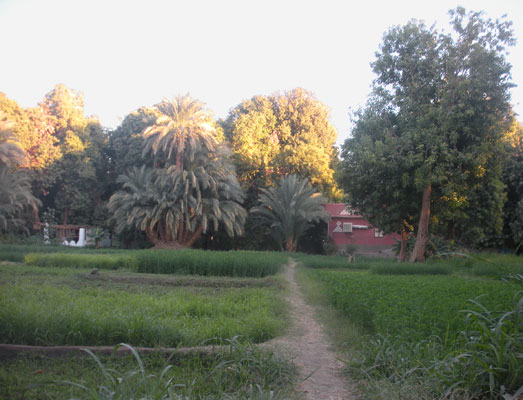
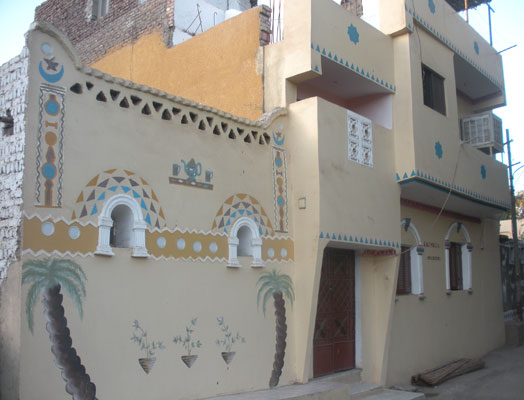
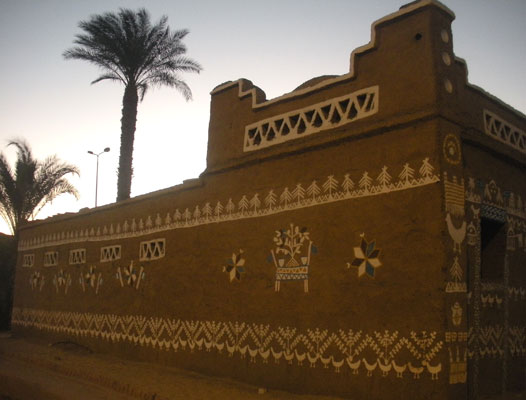
A stop at the elegant and historic Cataract Hotel for beers in their gracious lounge was a fun diversion.
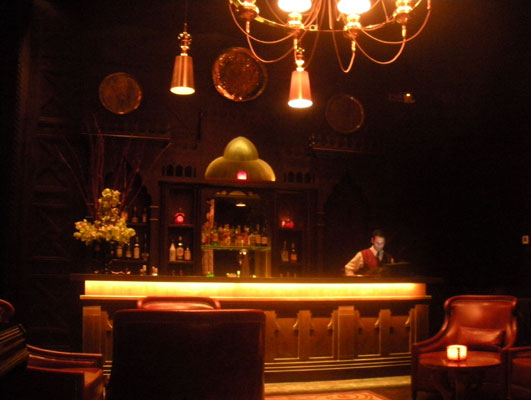
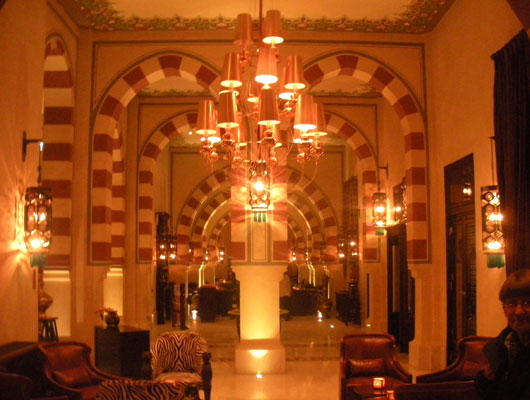
We also sailed on Captain Mohamed Ali's felucca, circumnavigating Elephantine Island and enjoying views of the city, the arid and mountainous west banks of the Nile, the Aga Khan Mausoleum, and a river view of the Cataract Hotel.
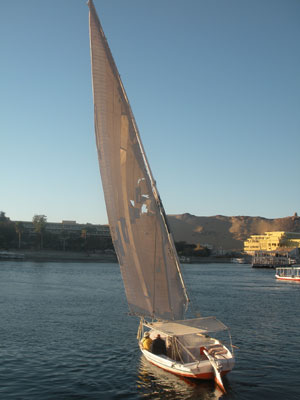
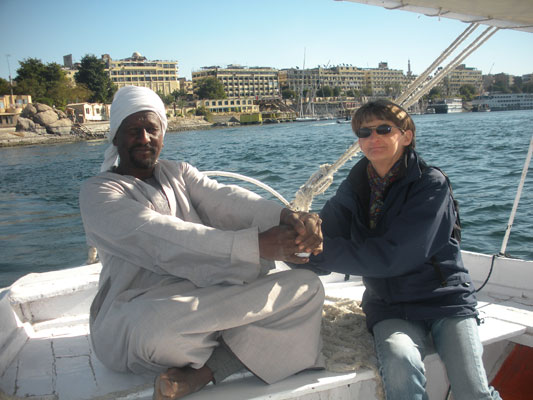
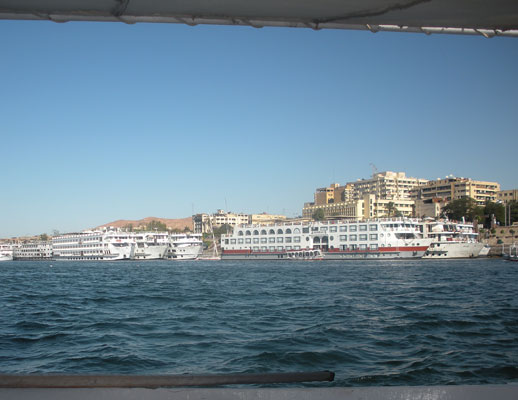
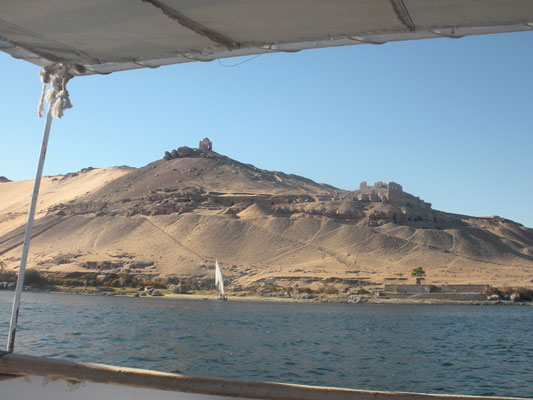
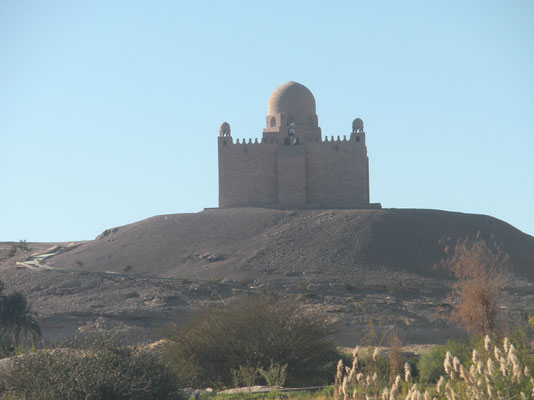
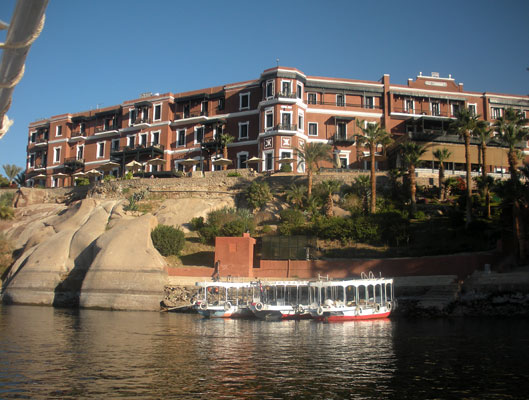
After a week, we said good by to the friends we had made, boarded a comfy cruise boat and sailed down river heading to Luxor.
To view our story of the Nile Cruise, click here
Click here to return to our 'Spring 2012 - Our Journey Through Egypt' page
![]()